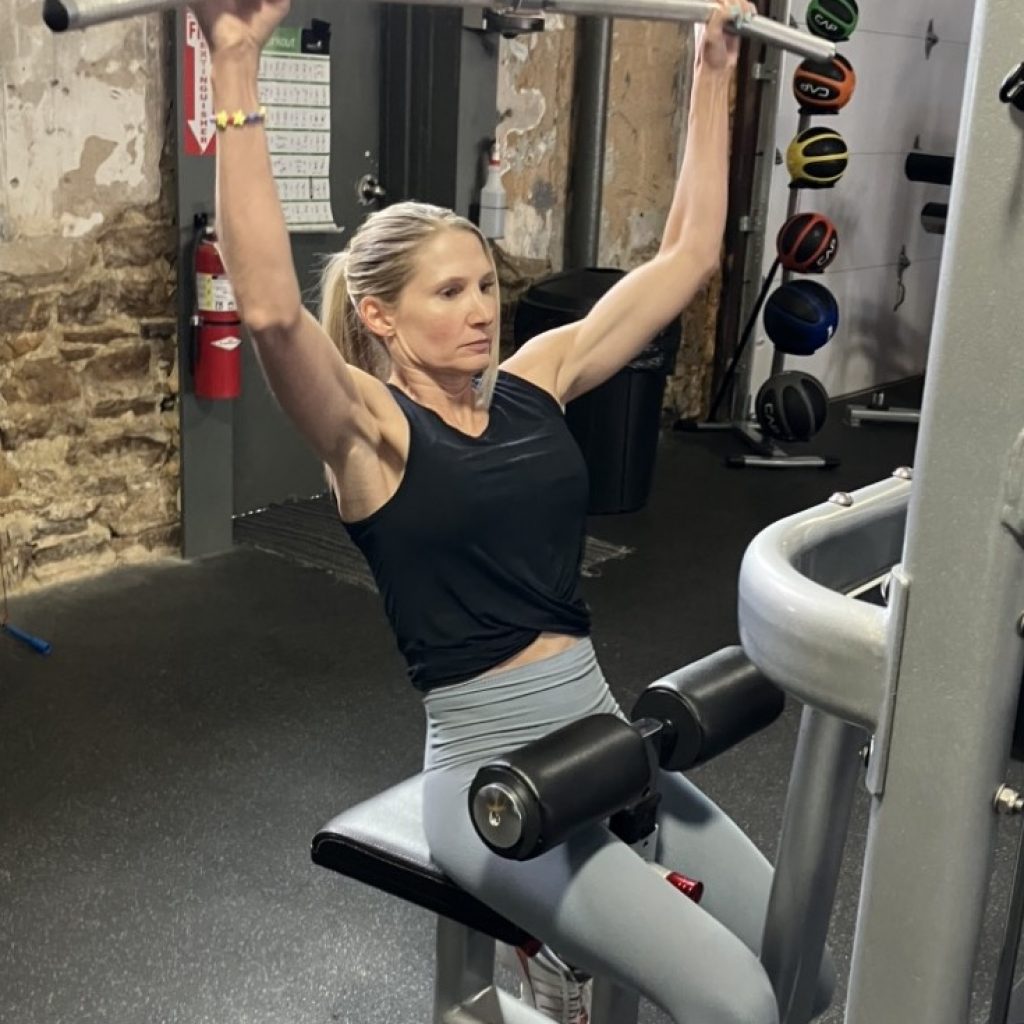
You can correct your posture without thinking about it!
Many people know about scoliosis, which is the side to side deviation of the spine from its anatomically correct shape. But…many people don’t realize there is also an anatomical balance from front to back. Terms that you may have heard for this are Hunch Back and Sway Back.
“Hunch Back” is what most people are familiar with, especially in the age of smart phones. In this case, the muscles on the front of the thoracic spine (rib cage) become shorter and tighter. The major two muscles that shorten are the pec muscles and the anterior shoulder muscles.
The opposing muscles are those on the back side of the thoracic spine. They become stretched in this situation. What ends up happening in this case is too much arch in the thoracic spine, causing the hunch back appearance. The reason this is bad for your spine is that it causes increased mechanical strain on the joints, which in turn increases the destructive processes of the joints. This is ultimately called arthritis.
Females need to be especially cautious of this situation, as decreasing estrogen levels weaken the bone structure and predisposes them to compression fractures of the spine.
The good news is that this can slowly be changed. It’s always important to sit up straight and have good posture. But, there is an easy way to force this to happen with less conscious control over it. This would be to strengthen the muscles at the back of the rib cage. Here are the three big muscles:
- The Trapezius Muscles: In the attached photo, Dr Kamra is showing the best exercise for this. This is called a “Lat Pulldown”. This will be a tough exercise if you want to make it work. We recommend three sets of ten. Start slow, but the long term goal is to work up to your body weight.
- The Levator Muscles: These are rope like muscles that connect the top of the shoulder blades to the upper neck. Do this by holding a dumbbell in each hand and shrug the shoulders up and down. Perform three sets of twenty. A good goal would be to work towards half of your body weight in each hand. It’s going to be hard but that’s what stimulates strengthening of muscles.
- The Rhomboid Muscles: These muscles connect the thoracic spine to the shoulder blades. If you strengthen them, they will pull the shoulder sockets back. There are several ways to perform exercises to this muscle, but we recommend using a Lat Row Machine that has a chest plate. The chest plate is important as it will reduce the chances of a lumbar disc injury that is more commonly seen on a cable row machine. We recommend three sets of ten and working to 75-100% of your body weight.
You will start seeing results if you perform these exercises two times a week for two months.
One note: The above numbers are assuming a reasonable body weight. If you’re male and your body weight is over 200 pounds, use 200 pounds in your weight calculations. If you’re female and your body weight is over 100 pounds, use 100 pounds in your weight calculations.
- Therapeutic Ultrasound and Pain - November 11, 2025
- Correcting Posture Naturally - October 20, 2025
- Meet Dr Kamra Dopps, DC - October 2, 2025



